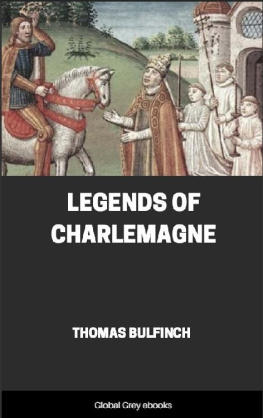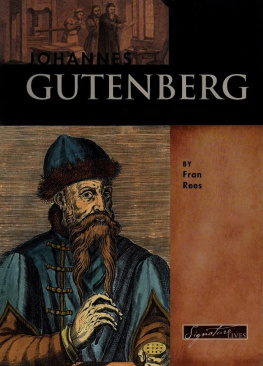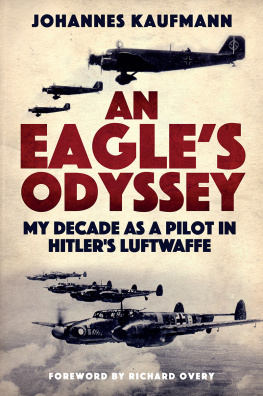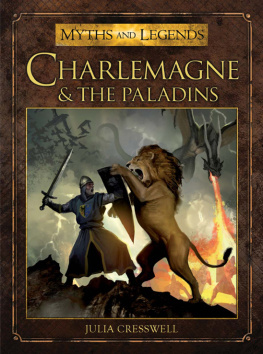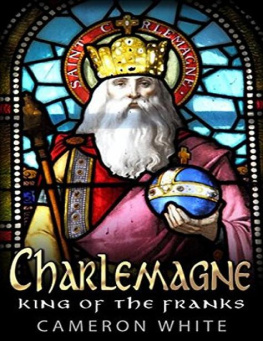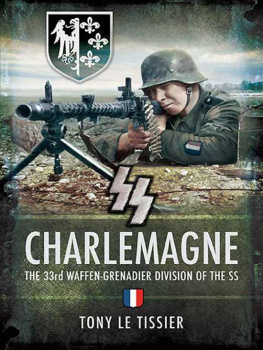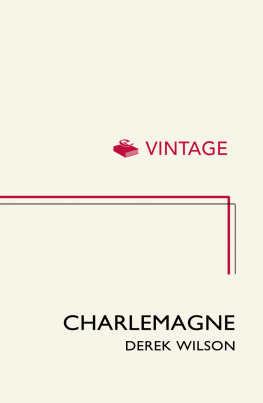Fried Johannes - Charlemagne
Here you can read online Fried Johannes - Charlemagne full text of the book (entire story) in english for free. Download pdf and epub, get meaning, cover and reviews about this ebook. year: 2016, publisher: Harvard University Press, genre: Religion. Description of the work, (preface) as well as reviews are available. Best literature library LitArk.com created for fans of good reading and offers a wide selection of genres:
Romance novel
Science fiction
Adventure
Detective
Science
History
Home and family
Prose
Art
Politics
Computer
Non-fiction
Religion
Business
Children
Humor
Choose a favorite category and find really read worthwhile books. Enjoy immersion in the world of imagination, feel the emotions of the characters or learn something new for yourself, make an fascinating discovery.

- Book:Charlemagne
- Author:
- Publisher:Harvard University Press
- Genre:
- Year:2016
- Rating:3 / 5
- Favourites:Add to favourites
- Your mark:
- 60
- 1
- 2
- 3
- 4
- 5
Charlemagne: summary, description and annotation
We offer to read an annotation, description, summary or preface (depends on what the author of the book "Charlemagne" wrote himself). If you haven't found the necessary information about the book — write in the comments, we will try to find it.
Charlemagne — read online for free the complete book (whole text) full work
Below is the text of the book, divided by pages. System saving the place of the last page read, allows you to conveniently read the book "Charlemagne" online for free, without having to search again every time where you left off. Put a bookmark, and you can go to the page where you finished reading at any time.
Font size:
Interval:
Bookmark:

CHARLEMAGNE

JOHANNES FRIED
Translated by Peter Lewis
HARVARD UNIVERSITY PRESS
Cambridge, Massachusetts
London, England
2016
Copyright 2016 by the President and Fellows of Harvard College
All rights reserved
This book was originally published as Karl der Grosse Verlag C. H. Beck oHG, Mnchen 2013
Jacket image: Portrait of Charlemagne (742Aachen, 814), King of Franks and Lombards and Emperor of Holy Roman Empire, standing with model of Palatine Chapel, painting by Caspar Johann Nepomuk Scheuren (18101887), 1825. De Agostini Picture Library / A. Dagli Orti / Bridgeman Images
Jacket design: Jill Breitbarth
978-0-674-73739-6 (alk. paper)
978-0-674-97341-1 (EPUB)
978-0-674-97340-4 (MOBI)
The Library of Congress has cataloged the printed edition as follows:
Names: Fried, Johannes, author. | Lewis, Peter, 1958 translator.
Title: Charlemagne / Johannes Fried ; translated by Peter Lewis.
Other titles: Karl der Grosse. English
Description: Cambridge, Massachusetts : Harvard University Press, 2016. | This book was originally published as Karl der Grosse (c) Verlag C.H. Beck oHG, Mnchen 2013Title page verso. | Includes bibliographical references and index.
Identifiers: LCCN 2016013071
Subjects: LCSH: Charlemagne, Emperor, 742814. | Holy Roman EmpireKings and rulersBiography. | FranceHistoryTo 987. | Holy Roman EmpireHistoryTo 1517.
Classification: LCC DC73 .F7513 2016 | DDC 944/.0142092 [B]dc23
LC record available at https://lccn.loc.gov/2016013071
FIGURE 1, TITLE PAGE Ninth-century coin showing Charlemagne as emperor. The obverse side reads KAROLUS IMP(erator) AUG(ustus); the F is thought to indicate the place where it was minted, Frankfurt am Main. It dates from sometime after 800 (Charlemagnes year of coronation as emperor), possibly 810. The reverse of this coin can be seen in .
THE FOLLOWING BOOK IS NOT A NOVEL, but it is a work of fiction all the samea fiction based on this authors visualization of Charlemagne. And even though the resulting image does, quite properly, adduce all the available evidence from the period in question, it is nonetheless subjectively formed and colored. It is impossible nowadays to fathom the depths of a life lived more than twelve hundred years ago, so the only thing remaining for a writer to fall back on is his own imagination. Not every topic that could have been touched on is touched on. Experts on Charlemagne will no doubt spot these omissions just as surely as critics will point to them as failings. Perhaps those same critics will also censure this author for the way he has chosen to approach his subject, although all they would be able to offer would be a different, no less subjective and fragmentary image. An objective portrayal of the great Carolingian ruler is simply not possible.
The world twelve hundred years before our current era is an alien landscape barely recognizable to us anymore. Charlemagne lived from 748 (a putative birth date) to 814 (a definite death date). At that time, Constantinople was not yet called Istanbul. There was no soaring cathedral at Cologne, the cathedral at Bamberg would not be built for another two hundred years, and the one at Speyer was an unimposing affair compared with the magnificent edifice that looms over the Rhine there today. In Paris, there was no Louvre, while Notre-Dame on the le de la Cit was still an episcopal church of modest proportions. In Venice, engineers had not yet driven oak pilings into the mud of the lagoon to provide firm foundations for St. Marks Basilica or the magnificent palazzi of the Venetian nobility, and no gondoliers plied their trade on the Grand Canal, serenading their passengers. The Vatican, meanwhile, was nothing more than a hill outside the walls of the Eternal City; it was home to a church built in late antiquity housing the tomb of the apostolic prince St. Peter, but not yet a lavish papal palace.
Nor did the Holy Roman Empire exist. Whenever there is mention of an empire in the following pages, this refers strictly to a territorial entity, not the grand political institution of later centuries. The term is also occasionally used to denote the personal rule of Charlemagne.
Europes populace was spread thin on the ground. Extensive tracts of land did not witness a human presence for weeks or even years on end. Cities that had survived from classical antiquity existed in name only; in many cases, they were full of nothing but ruins. They were not melting pots of immigrants from far-off lands, still less the proud, independent municipalities they became half a millennium later. The great migrations of people that had typified the ancient world, and that have continued to characterize human history right up to the present day, had ground to a temporary halt as a result of the great plague of the sixth century. The continent was covered with dense, almost impenetrable forests. Oar and sail power still dominated the oceans, and birds ruled the skies. The mountain summits of the Alps were shrouded in solitude and silence. Nights were illuminated by nothing but the light of the moon and stars; candles, which still cost a fortune, burned in churches and palaces but not yet in the lowly abodes of ordinary folk. Peoples lives followed the course of the sun; things proceeded at a sedate pace. Handicraft was in demand, and apart from mills, manual labor was not yet facilitated by any machineshard work without a doubt, but on a human scale. The world was a placid place, time was not precious, and no one except fugitives from the law was hounded.
We are thus confronted with an alien world, and with people whose social and technical knowledge is utterly strange to us, who spoke a now wholly unfamiliar language, and whose entire mode of speech and thought and logic is far removed from our own. We do not share their emotions, we no longer have their skills at our fingertips, their aspirations and plans appear backward to us, and to us modern citizens of the world who are still grappling with the onset of globalization and its consequences, their values and ethics are virtually meaningless. For instance, no one in the age of Charlemagne wrote or drew caricatures; instead, both the common people and the ruling elites were in the habit of demonizing all opponents, heretics, or anyone who thought differently. Nor was irony common intellectual currency in this period. One notable feature of the time was the kings claim to exclusive sovereignty over interpretation of the past. This authoritative memory was evident throughout society and yielded to different perceptions and interpretations only in the rarest of cases.
As a result, we can open up and present this world only in the vaguest and most hypothetical way. The reader will search in vain for any wide-ranging reflections on methodology in the following pages. Yet it should be borne in mind that every beginning has its own preamble and starting point, and that every effect generates further effects of its own. Many historians ignore this fact and take the view that anyone seeking to understand the start of the beginning or the resulting effects must be thinking in teleological terms. But there are whole worlds between cause, effect, and telos. All the same, we have to take into account processes, systematically interacting processes, in which an uncontrollable abundance either of intertwining coincidences in the environment and society or of unintentional simultaneity in human activity produces just as lasting and perhaps even more effective results than any systematic definition of objectives. In retrospect, this result might take on the appearance of something deliberate and planned.
Font size:
Interval:
Bookmark:
Similar books «Charlemagne»
Look at similar books to Charlemagne. We have selected literature similar in name and meaning in the hope of providing readers with more options to find new, interesting, not yet read works.
Discussion, reviews of the book Charlemagne and just readers' own opinions. Leave your comments, write what you think about the work, its meaning or the main characters. Specify what exactly you liked and what you didn't like, and why you think so.


